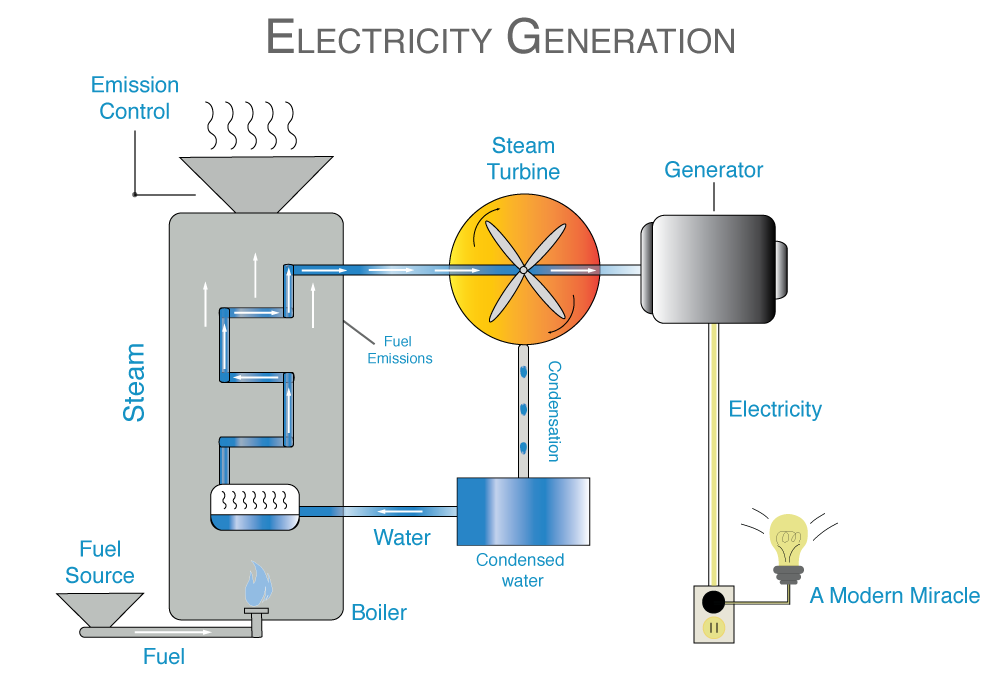How Does Electricity Generation Work?
Electricity generation is a complex process that involves a variety of technologies and fuels. From coal to nuclear to renewables, there are many different sources of energy that can be used to produce electricity. In this post, we will take a closer look at the electricity generation process and how it works. At its most basic level, electricity generation involves transforming some form of fuel into electrical power. The fuels used to generate electricity can be divided into two main categories: fossil fuels and renewable energy sources. Fossil fuels include coal, oil, and natural gas, while renewable energy sources include solar, wind, geothermal, and hydroelectric power. The first step in the electricity generation process is to convert the fuel into heat. This is typically done by burning the fuel in a combustor, which releases energy in the form of heat. The heat is then used to create steam, which can be used to turn a turbine. As the turbine spins, it generates electricity that is sent to the grid. In addition to fossil fuels, there are also a number of renewable energy sources that can be used to generate electricity. Solar power, for example, uses photovoltaic cells to convert sunlight into electricity. Wind power relies on turbines to harness the power of the wind, while geothermal power uses heat from the earth's core to generate electricity. One of the most common ways to generate electricity is through the use of fossil fuels, particularly coal. Coal-fired power plants generate a significant amount of electricity, but they also produce a lot of pollution. Burning coal releases carbon dioxide, sulfur dioxide, and other pollutants into the air, which can have negative environmental and health impacts. Another fossil fuel that is used to generate electricity is natural gas. Natural gas is a cleaner-burning fuel than coal and produces less pollution. However, like coal, natural gas is a finite resource, meaning that we will eventually run out of it. Renewable energy sources like solar and wind are becoming increasingly popular as the world looks for cleaner, more sustainable sources of energy. Solar power is particularly promising because it is abundant and can be harnessed using relatively simple technology. Wind power is also growing in popularity as the technology becomes more efficient and cost-effective. Hydroelectric power is another important renewable energy source that has been used for many years. Hydroelectric power plants generate electricity by harnessing the power of moving water. Dams are used to create water reservoirs, which are then used to power turbines that generate electricity. Nuclear power is another source of energy that can be used to generate electricity. Nuclear power plants use fission to generate heat, which is used to create steam and turn a turbine. Nuclear power is a controversial topic because of the potential risks associated with radiation exposure and the problem of storing nuclear waste. In addition to the various sources of energy used to generate electricity, there are also a number of technologies used in the process. For example, scrubbers are used to remove pollutants from the exhaust gases produced by power plants. Carbon capture and storage (CCS) technology is also being developed to capture carbon dioxide emissions and store them underground or in other locations. Overall, the electricity generation process is a complex and important part of our modern world. As we look for cleaner, more sustainable sources of energy, it is important to understand the different technologies and fuels involved in the process. Whether it's fossil fuels, renewable energy sources, or nuclear power, there are many different ways to generate electricity, each with its own advantages and disadvantages. As we move forward, it will be important to continue to innovate and find new ways to generate electricity that are cleaner, more efficient, and more sustainable. 

www.instituteforenergyresearch.org - electricity generation diagram sources power gas natural alternative
Post a Comment for "How Does Electricity Generation Work?"